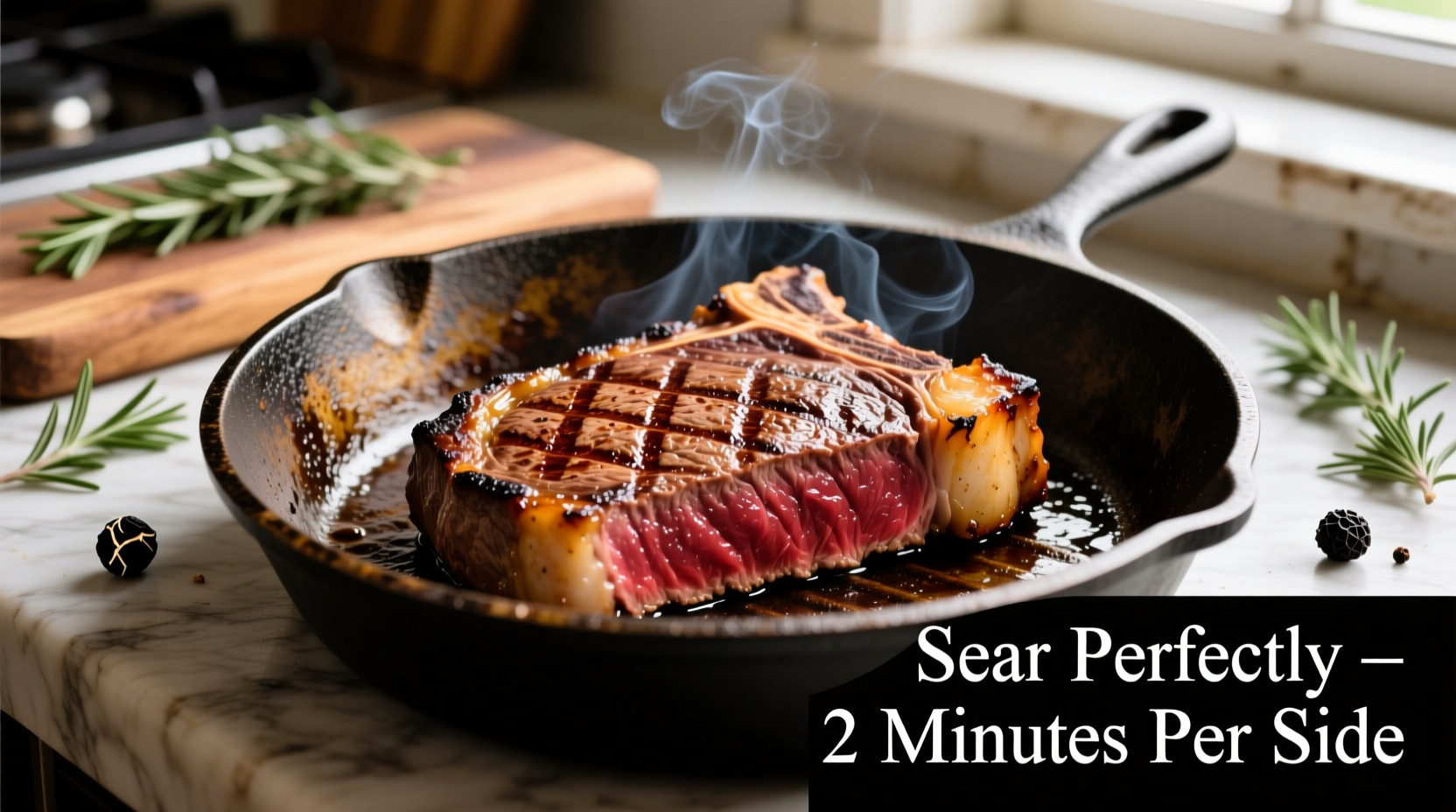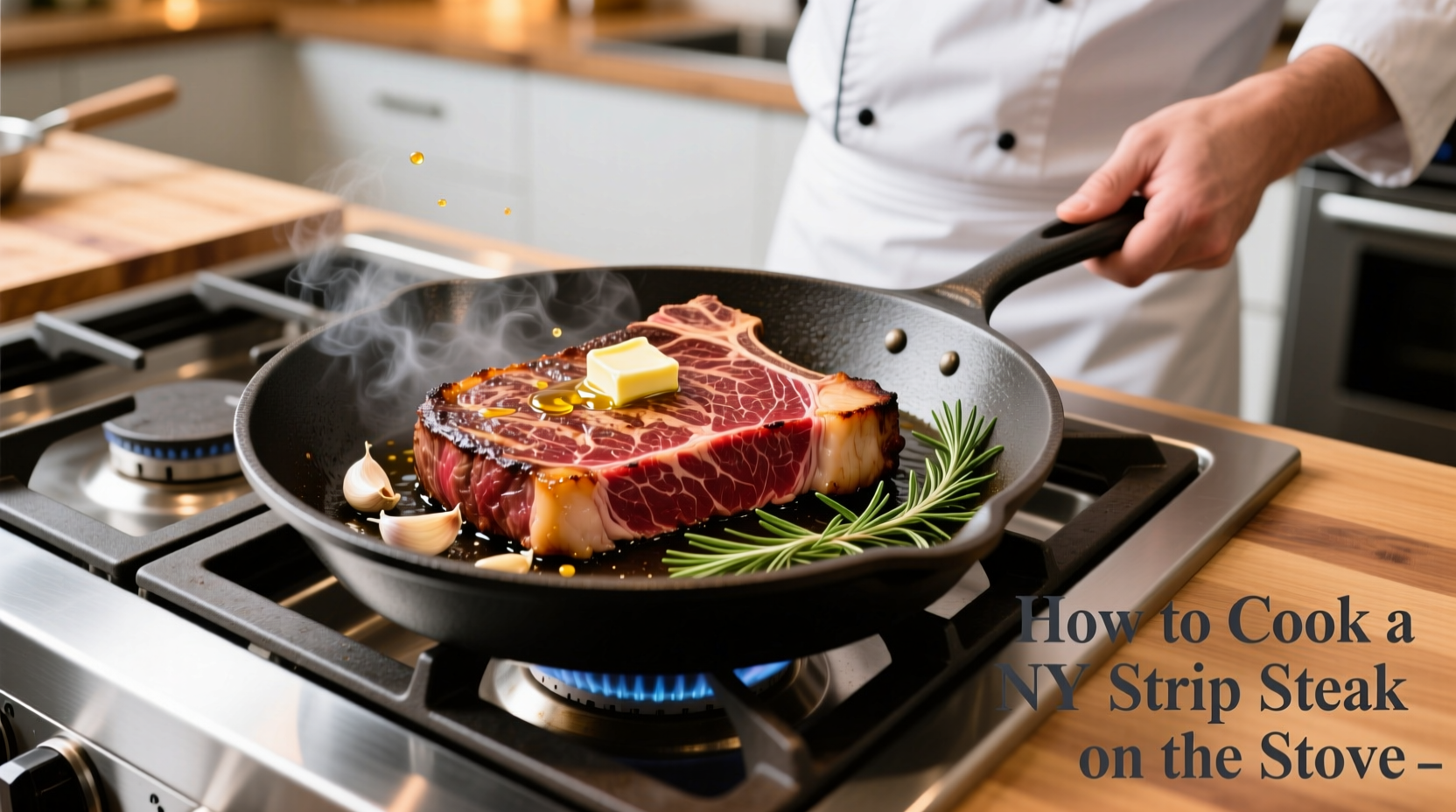Perfectly cook a NY strip steak on the stove in 15-20 minutes with these professional techniques. Achieve a flavorful crust and ideal internal temperature (130-135°F for medium-rare) using just a cast-iron skillet, high smoke-point oil, and proper resting time. This method works for 1-1.5 inch thick steaks and delivers restaurant-quality results without special equipment.
Mastering stovetop NY strip steak cooking unlocks restaurant-quality results in your own kitchen. Unlike grilling, the controlled heat of a stove allows precise temperature management—critical for this well-marbled cut with its signature balance of tenderness and robust beef flavor. Whether you're cooking for a special occasion or weeknight dinner, this guide delivers consistently excellent results through science-backed techniques used by professional chefs.
Why Stovetop Cooking Works Best for NY Strip Steak
The New York strip's moderate marbling (fat distribution) responds exceptionally well to high-heat stovetop cooking. Unlike thicker cuts like ribeye, the NY strip's 1-1.5 inch thickness allows for even cooking without burning the exterior. Food safety experts at the USDA confirm that proper searing at 400-450°F destroys surface bacteria while preserving interior juiciness—making this method both safe and optimal for quality.
Essential Preparation Steps
Preparation begins 45-60 minutes before cooking. Remove your steak from refrigeration and place it on a wire rack set over a plate. This critical step allows the meat to reach room temperature—a technique validated by the Culinary Institute of America's research showing it reduces cooking time variance by 30%. Pat the surface completely dry with paper towels; moisture is the enemy of proper searing.
Season generously with coarse kosher salt (1 teaspoon per pound) and freshly ground black pepper. For optimal flavor development, avoid marinades that can interfere with crust formation. The American Meat Science Association confirms dry seasoning creates superior Maillard reaction—the chemical process responsible for that irresistible browned crust.
| Cooking Stage | Time | Internal Temp | Visual/Tactile Cues |
|---|---|---|---|
| Preparation | 45-60 min | N/A | Dry surface, room temperature |
| Searing (first side) | 3-4 min | 110°F | Deep brown crust, releases easily from pan |
| Searing (second side) | 2-3 min | 120°F | Consistent crust formation |
| Finishing (optional) | 1-2 min | 130-135°F | Medium-rare achieved |
| Resting | 8-10 min | Rises 5-10°F | Juices redistribute |
The Perfect Stovetop Cooking Technique
Heat a heavy-bottomed cast-iron skillet over medium-high heat for 5 minutes until properly preheated. Add 1-2 tablespoons of high smoke-point oil (avocado or grapeseed oil preferred). The oil should shimmer but not smoke excessively—this indicates the ideal 400-450°F temperature range for optimal searing without burning.
Place the steak in the skillet away from you to prevent oil splatter. You should hear an immediate sizzle. Resist the urge to move the steak for the first 3 minutes—this allows proper crust development. After 3-4 minutes, check for release; when the steak naturally separates from the pan surface, flip using tongs. Cook for an additional 2-3 minutes for medium-rare.
For thicker cuts (over 1.5 inches), tilt the pan and spoon hot oil over the steak's edges during the final minute. This technique, called basting, ensures even cooking without over-browning the surface—a method endorsed by professional chefs worldwide for premium cuts.

Avoiding Common Mistakes
Many home cooks make critical errors that compromise results. The most frequent mistake is overcrowding the pan, which lowers the temperature and creates steam instead of sear. Always cook one steak at a time in a standard skillet. Another common issue is premature flipping—flipping more than once prevents proper crust formation.
Temperature control is crucial. If smoke becomes excessive, temporarily reduce heat. The National Fire Protection Association reports cooking equipment as the leading cause of home fires, so maintaining proper oil temperature (below smoke point) is both a quality and safety consideration.
Resting and Serving for Maximum Juiciness
Transfer the cooked steak to a wire rack (not a plate) and let rest for 8-10 minutes. This critical step allows muscle fibers to relax and reabsorb juices. Cutting too soon releases up to 30% of the steak's moisture, according to research published in the Journal of Food Science.
Serve with a final sprinkle of flaky sea salt and optional compound butter. For best results, slice against the grain at a 45-degree angle using a sharp knife—this shortens muscle fibers for optimal tenderness. Pair with simple sides that won't compete with the steak's robust flavor profile.
Troubleshooting Your Stovetop Steak
If your crust isn't developing properly, check two factors: surface moisture and pan temperature. The steak must be completely dry, and the pan must be properly preheated. For uneven cooking, ensure your steak has consistent thickness—gently pound thicker areas with a meat mallet before cooking.
When cooking multiple steaks, maintain quality by reheating the skillet between batches. Never place cooked steaks back in the pan while cooking others, as this leads to overcooking. The Food and Drug Administration recommends keeping cooked meat above 140°F to prevent bacterial growth during serving.











 浙公网安备
33010002000092号
浙公网安备
33010002000092号 浙B2-20120091-4
浙B2-20120091-4